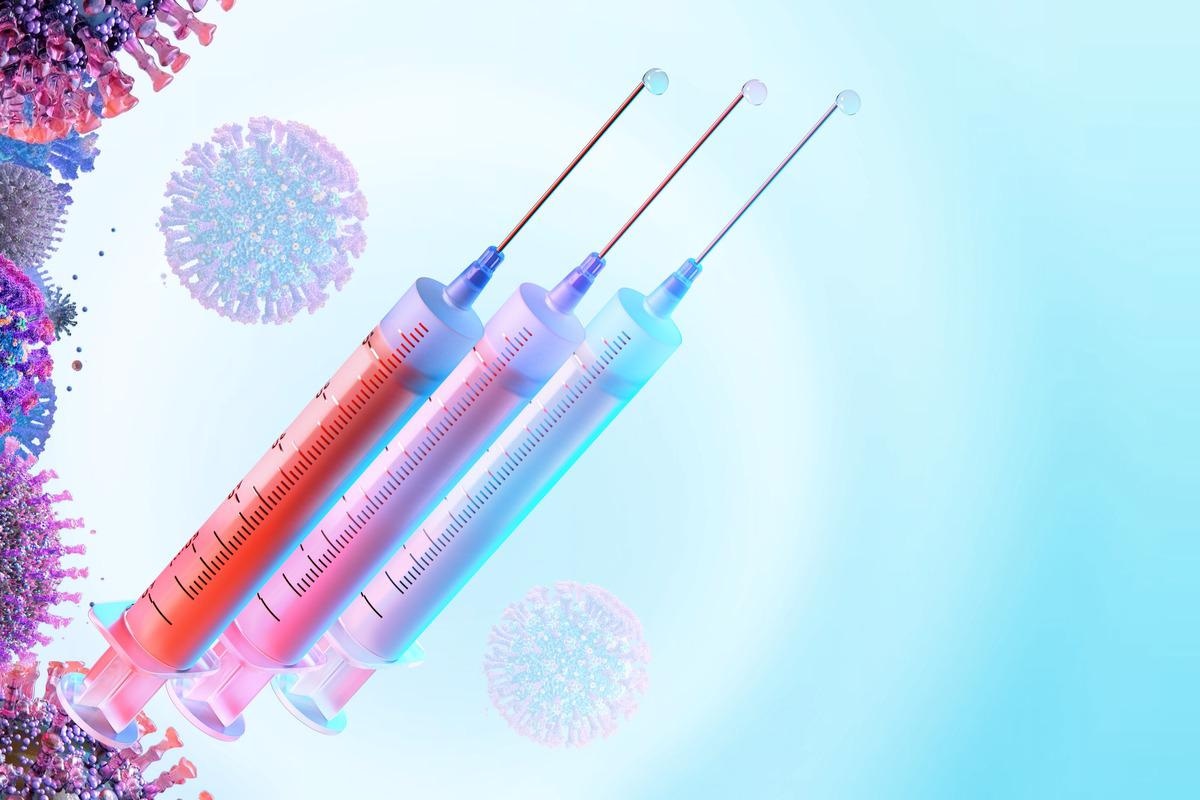A recent article published in the Med journal reported that the severe acute respiratory syndrome coronavirus 2 (SARS-CoV-2) booster vaccinations enhance the SARS-CoV-2 Omicron sublineage neutralizations.

Background
In late November 2021, the SARS-CoV-2 Omicron variant was detected in Japan. This variant has nearly 36 mutations in the spike (S) protein, which is a target for neutralizing antibodies and can evade vaccine-mediated protection.
Numerous studies have shown that antibodies to SARS-CoV-2 drop progressively following the second vaccination. A coronavirus disease 2019 (COVID-19) booster vaccination program began primarily focusing on medical professionals and at-risk groups in several nations. Yet, the immunogenicity and safety of the three-dose SARS-CoV-2 vaccination regime against Omicron are unclear.
About the study
In the present study, the scientists analyzed the immunogenicity and safety of a three-dose regimen of the COVID-19 messenger ribonucleic acid (mRNA) Pfizer vaccine. The authors assessed 272 healthcare personnel for long-standing Pfizer vaccine immunogenicity and safety. The team constructed a COVID-19 vaccinee panel to determine the vaccine's two- and three-dose immunogenicity and safety against SARS-CoV-2 variants of concern (VOCs) such as Omicron. For this, they used a live SARS-CoV-2 microneutralization test.
The authors isolated and analyzed two Omicron sequences harboring R346K mutations in the S receptor-binding domain (RBD), the primary targets for evading neutralizing monoclonal antibodies like AZD1061/cilgavimab, despite being rare within the Omicron lineage. The team contrasted neutralizing titers (NTs) against the SARS-CoV-2 VOCs such as Gamma, Delta, Omicron, and Beta, following the second shot of the COVID-19 Pfizer vaccine. The researchers analyzed the alterations in NTs and anti-S antibodies against the Omicron sublineages in Japanese medical personnel who received a third shot of the Pfizer vaccination.
Findings and discussions
The study results were consistent with a recent investigation, which found that NTs for the SARS-CoV-2 Gamma and Beta strains with three-vaccine escape mutations in the S RBD were significantly decreased following two-dose Pfizer vaccination. Further, NTs against Gamma and Delta were marginally lower than those against WK-521, the SARS-CoV-2 parent strain. The researchers noticed a significant decline in NTs against the Omicron variant. Even 10–12 days following the second vaccination, NTs against Omicron in sera samples from 35% of subjects were beneath the detection limit, demonstrating poor or no cross-reactivity toward Omicron.
After the second vaccination, NTs against the Omicron, WK-521, and Delta strains dramatically dropped 244 days later. According to the NT monitoring data, the efficacy of the second vaccination shot was not sustained at 243 days or after.
NTs and anti-S antibodies against Omicron, Delta, and WK-521 were significantly as well as rapidly elevated after three doses of Pfizer vaccination. NTs against the Delta variant following the booster dose were superior to those against the WK-521 variant post-second vaccine dose. After the booster shot, the NTs against Omicron were equivalent to those against WK-521 following the second dose. These findings show that three-dose COVID-19 Pfizer vaccinations against both the original strain and contemporary variants will have equal vaccine efficacy.
The researchers discovered that a three-dose vaccination boosts neutralizing antibodies against the Omicron subvariants, with no significant changes in neutralization capabilities between the sublineages. A phase 2/3 trial found that the booster shot does not affect the rate of adverse events or particular adverse effects in a short-term review. Healthy subjects or those who had fatigue, headache, injection site pain, or fever did not demonstrate abnormal or sustained cytokine generation one to two weeks following the third vaccination shot.
Only eotaxin levels rose following the third vaccine shot relative to the period following the second dose. Eotaxin was a chemokine ligand for C-C Motif Chemokine Receptor 3 (CCR3) secreted by epithelial and endothelial cells and was a basophil and eosinophil chemoattractant. During persistent inflammatory reactions, eotaxin attracts eosinophils to the inflammatory site and produces reactive oxygen species, rendering tissue damage.
After the third vaccination dosage, eotaxin levels may be linked to adverse effects such as injection site redness and pain. Damage-associated inflammatory cytokine concentrations triggered by eosinophils, and major eotaxin pathways, including interleukin-4 and interferon-gamma, were unaltered in the current samples. These findings imply that eotaxin on its own was not a predictor of serious adverse outcomes.
Conclusions
The study findings demonstrated that the anti-S antibodies and NTs against the SARS-CoV-2 ancestor strain (WK-521) were robust following the COVID-19 Pfizer two-dose vaccination, whereas NTs against VOCs were much lower. NTs against Omicron were completely eradicated in approximately 80% of the vaccinee panel between 93–247 days of the vaccine's second shot.
Anti-S antibodies and NTs against the SARS-CoV-2 WK-521, Omicron, and Delta variants increased significantly after the booster vaccination. Between the Omicron subvariants BA.1.1, BA.2, and BA. 1.1, there were no substantial changes in the neutralizing ability of sera from booster-vaccinated people. The authors observed that booster vaccination broadened cross-reactivity and humoral immunity with the Omicron variant without affecting cytokine profiles or the rate of adverse events.
Overall, the study findings show that a third COVID-19 vaccine dose was safe and increased neutralization against the SARS-CoV-2 Omicron variant.
- Seki, Y. et al. (2022) "Safety and immunogenicity of the Pfizer/BioNTech SARS-CoV-2 mRNA third booster vaccine dose against the SARS-CoV-2 BA.1 and BA.2 Omicron variants", Med. doi: 10.1016/j.medj.2022.04.013. https://www.cell.com/med/fulltext/S2666-6340(22)00179-9
Posted in: Medical Science News | Medical Research News | Disease/Infection News
Tags: Antibodies, Cell, Chemokine, Coronavirus, Coronavirus Disease COVID-19, covid-19, Cytokine, Efficacy, Eosinophil, Fatigue, Fever, Headache, Healthcare, immunity, Interferon, Interferon-gamma, Interleukin, Ligand, Omicron, Oxygen, Pain, Protein, Receptor, Respiratory, Ribonucleic Acid, SARS, SARS-CoV-2, Severe Acute Respiratory, Severe Acute Respiratory Syndrome, Syndrome, Vaccine

Written by
Shanet Susan Alex
Shanet Susan Alex, a medical writer, based in Kerala, India, is a Doctor of Pharmacy graduate from Kerala University of Health Sciences. Her academic background is in clinical pharmacy and research, and she is passionate about medical writing. Shanet has published papers in the International Journal of Medical Science and Current Research (IJMSCR), the International Journal of Pharmacy (IJP), and the International Journal of Medical Science and Applied Research (IJMSAR). Apart from work, she enjoys listening to music and watching movies.
Source: Read Full Article
